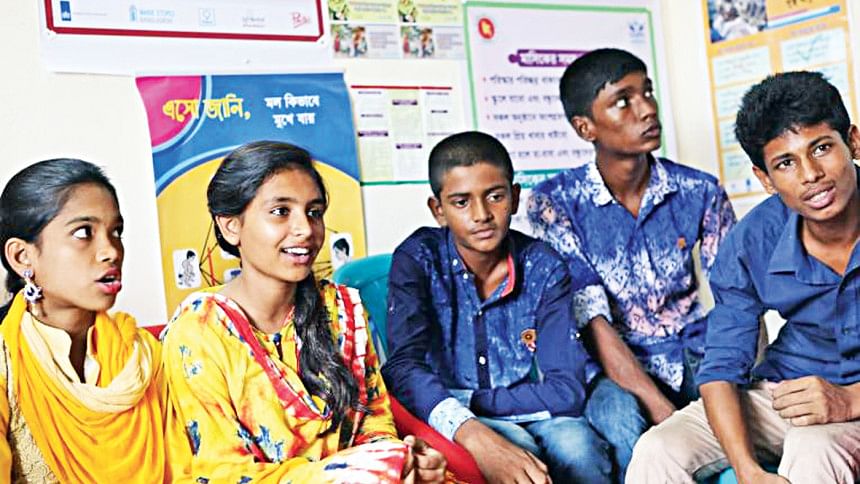The challenge of adolescent SRH services in Bangladesh

The adolescent population (between the ages of 10 and 19) covers more than one-fifth of the total population of Bangladesh, which consists of approximately 36 million in total. Currently 52% of the girls get married by the age of 18, and 18% by the age of 15 and the adolescent birth rate is 113 births per 1,000 women. As an essential part of Adolescent Sexual and Reproductive Health (ASRH), information sessions in school and internet materials could be highly helpful and reliable for the youngsters.
Current challenges
Adolescents face tremendous challenges to meeting their sexual and reproductive health (SRH) needs because of lack of awareness about puberty, sexuality and basic human biological changes. These underlying factors lead to high rates of early pregnancy, sexually transmitted infections (STIs), sexual violence, limited negotiation skills, forced marriage and high fertility rates.
To better meet the adolescents' health needs, the government is striving to make progress in the health sector and made significant commitments to SRH in its 2016-2020 five-year plan. However, several issues are still a concern in term of sexual and reproductive health of young females:
• The government's five-year plan has no specific guidelines for boys and unmarried girls, and their health needs.
• The government has initiated adolescent friendly health corner (AFHC), but the operation hours (9 am – 2 pm) are not convenient for the students, as it is school time for the majority.
• In the National Strategy for Adolescent Health 2017-2030 (NSAH) there is no mention of the third gender and lesbian, gay, bisexual, and transgender (LGBT) adolescents in the suggested measures, implementation strategies and particularly in the section on vulnerable adolescents and adolescents in challenging circumstances.
• There is a lack of tailored, age-appropriate SRH programme for younger adolescents (between the ages of 10 and 14) in the strategy. It is crucial to address early adolescents in policies and programmes. Nonetheless, this is the age when gender and sexual norms, values, and attitudes start forming, and many adolescents become sexually active during this period or soon after.
• Among other concerns, an explicit focus on STIs, especially HIV services for adolescents is lacking. According to the reports on ASRH, only 12% of ever-married Bangladeshi adolescents had comprehensive knowledge about HIV/AIDS. Knowledge about other sexually transmitted diseases is far lower than HIV. Also, most programmes focus on reproductive health issues (e.g. family planning, maternal care, and so forth) but neglect sexual health.
Recommendations that could improve the services for the adolescents
• The rate of secondary education in 2018 is 72.69%, thus school health programmes could serve timely and efficiently with a huge coverage of young individuals by visits of community health workers or health personnel for information sessions, counselling, presentation and workshops.
• There could be a forum for young individuals to talk about sexuality and healthcare, staffed by school girls and a trained personnel. The forum could involve girls via social media, and arrange health events on the International Women's Day or Mother's Day.
• An online student radio service, which would run anonymous question-and-answer sessions on ASRH for young people, would be helpful.
The adolescence period, with all the challenges of sexual maturity, can become more complicated without appropriate information. To overcome the barriers, practical initiatives such as visit of health workers on a regular basis and state sponsored online resources dedicated to this age bracket, could be beneficial preventive health measures.
Dr Tamanna Afroz, MPhil in International Community Health, University of Oslo.
Email- [email protected]

 For all latest news, follow The Daily Star's Google News channel.
For all latest news, follow The Daily Star's Google News channel. 



Comments